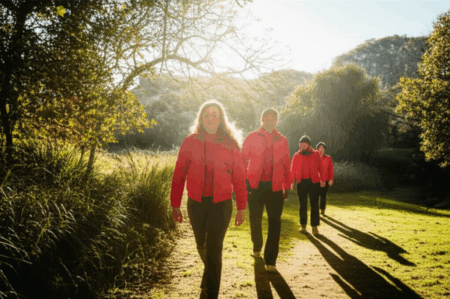For many gym-goers, especially those just starting, building bigger arms is a top priority. While a well-rounded physique is essential, there’s no denying the appeal of well-developed biceps that fill out a T-shirt. However, achieving significant arm growth requires more than just aimless curls; it demands a strategic, science-backed approach. This guide presents a biceps routine inspired by insights from sports scientists, focusing on maximizing muscle growth (hypertrophy) for impressive results.
Understanding Biceps Anatomy
Before diving into the workout, it’s crucial to understand the anatomy of the biceps. The biceps brachii, as the name suggests (“bi” meaning two, “ceps” derived from caput meaning head), is composed of two heads:
- Long Head: Located on the outer part of the arm, contributes to the peak of the biceps.
- Short Head: Located on the inner part of the arm, contributes to overall bicep thickness.
Additionally, the brachialis, a muscle lying underneath the biceps, plays a significant role in elbow flexion and contributes to overall arm size. A well-developed brachialis can “push” the biceps upward, enhancing the peak and creating better separation between the biceps and triceps.
To effectively train the biceps, a routine should target both heads and the brachialis.
Key Principles for Biceps Hypertrophy
A sports scientist-recommended biceps routine incorporates several key principles:
- Compound and Isolation Exercises: Workouts should include both compound exercises (those that work multiple muscle groups simultaneously) and isolation exercises (those that target the biceps directly).
- Progressive Overload: Gradually increasing the weight, reps, or sets over time is crucial for continued muscle growth. This challenges the muscles to adapt and become stronger.
- Varying Rep Ranges: Incorporating a mix of rep ranges (e.g., 6-8, 8-10, 10-15) can stimulate different muscle fibers and growth pathways.
- Training in Different Positions: Varying the position of the upper arm relative to the torso can target the biceps in different ways. This includes exercises with arms at the sides, in front of the body, and behind the body.
- Mind-Muscle Connection: Focusing on squeezing the biceps during each rep can enhance muscle activation and growth.
- Controlled Eccentric (Negative): Slowing down the lowering portion of each rep is an effective way to boost muscle growth.
The Sports Scientist-Inspired Biceps Routine
This routine incorporates the principles above, offering a comprehensive approach to biceps hypertrophy. It’s designed to be performed twice a week, with adequate rest in between sessions.
Workout 1
- Chin-Ups (Weighted if Possible): 3 sets of 6-10 reps.
- Why: Chin-ups are a compound exercise that heavily engages the biceps. Using a weight belt to add resistance allows for progressive overload. They also stimulate type II muscle fibers which respond well to heavy weight.
- Incline Dumbbell Curls: 3 sets of 8-12 reps.
- Why: The incline position stretches the long head of the biceps, allowing for greater force production and emphasis on this muscle.
- Concentration Curls: 3 sets of 10-15 reps.
- Why: Concentration curls minimize the involvement of other muscles, allowing for maximum focus on the biceps. They also highly activate the short head of the biceps.
- Hammer Curls: 2 sets of 12-15 reps.
- Why: Hammer curls target the brachialis, contributing to overall arm thickness. Focus on a slow, controlled eccentric.
Workout 2
- Barbell Curls: 3 sets of 6-10 reps.
- Why: Barbell curls allow for the use of heavier weights than most curl variations, promoting overall strength and muscle mass.
- Lying Cable Curls: 3 sets of 8-12 reps
- Why: This variation maximizes tension, especially at the bottom of the movement, promoting growth by emphasizing the muscle’s stretched position. It also reduces axial fatigue.
- Preacher Curls: 3 sets of 10-15 reps.
- Why: Preacher curls isolate the biceps and eliminate cheating, ensuring maximum muscle engagement.
- Cable Curls: 2 sets of 12-15 reps.
- Why: Cable curls provide constant tension throughout the entire range of motion, maximizing muscle stimulation.
Exercise Variations and Alternatives
This routine can be adapted based on individual preferences and equipment availability. Here are some variations and alternatives for each exercise:
- Chin-Ups:
- Lat Pulldowns (if unable to perform chin-ups)
- Assisted Chin-Up Machine
- Incline Dumbbell Curls:
- Alternating Incline Dumbbell Curls
- Behind-The-Back Curls (using a FreeMotion machine or cables)
- Concentration Curls:
- Assisted Concentration Curls
- Cable Concentration Curls
- Hammer Curls:
- Rope Hammer Curls (using a cable machine)
- Cross-Body Hammer Curls
- Barbell Curls:
- EZ-Bar Curls (reduces wrist stress)
- Cheat Curls (for advanced lifters, use momentum to overload the biceps, but maintain control)
- Lying Cable Curls:
- Incline Dumbbell Curls (If lying cable curls aren’t possible, incline dumbbell curls provide tension under stretch.)
- Preacher Curls:
- Cable Preacher Curls
- Dumbbell Preacher Curls
- Cable Curls:
- Standing Bicep Cable Curl
- One-Arm Cable Curl
Progression and Periodization
To ensure continuous progress, it’s crucial to implement progressive overload. This can be achieved by:
- Increasing Weight: Gradually increase the weight used for each exercise while maintaining proper form.
- Increasing Reps: If unable to increase weight, aim to increase the number of reps performed with the current weight.
- Increasing Sets: Add an additional set to each exercise.
- Reducing Rest Time: Gradually decrease the rest time between sets to increase workout intensity.
Additionally, consider incorporating periodization, which involves cycling through different training phases with varying intensities and volumes. This can help prevent plateaus and optimize muscle growth. For example, you could alternate between phases of:
- Strength Focus: Lower reps (6-8) with heavier weights.
- Hypertrophy Focus: Moderate reps (8-12) with moderate weights.
- Endurance Focus: Higher reps (12-15) with lighter weights.
The Importance of Nutrition and Recovery
No biceps routine is complete without proper nutrition and recovery. To maximize muscle growth:
- Consume Adequate Protein: Aim for at least 1 gram of protein per pound of body weight per day. Protein is essential for muscle repair and growth.
- Eat Sufficient Calories: Ensure you’re consuming enough calories to support muscle growth. A slight caloric surplus is generally recommended.
- Get Enough Sleep: Aim for 7-9 hours of sleep per night. Sleep is crucial for muscle recovery and hormone regulation.
- Manage Stress: Chronic stress can hinder muscle growth. Practice stress-reducing activities like yoga or meditation.
Listen to Your Body
It’s important to listen to your body and adjust the routine as needed. If you experience pain, stop the exercise and consult with a healthcare professional. Don’t be afraid to experiment with different exercises and techniques to find what works best for you.
Conclusion
Building bigger biceps requires a strategic, science-backed approach. By incorporating the principles outlined in this guide and consistently following the recommended routine, you can achieve impressive arm growth and sculpt the peaks you’ve always desired. Remember to prioritize proper form, progressive overload, and adequate nutrition and recovery for optimal results.







